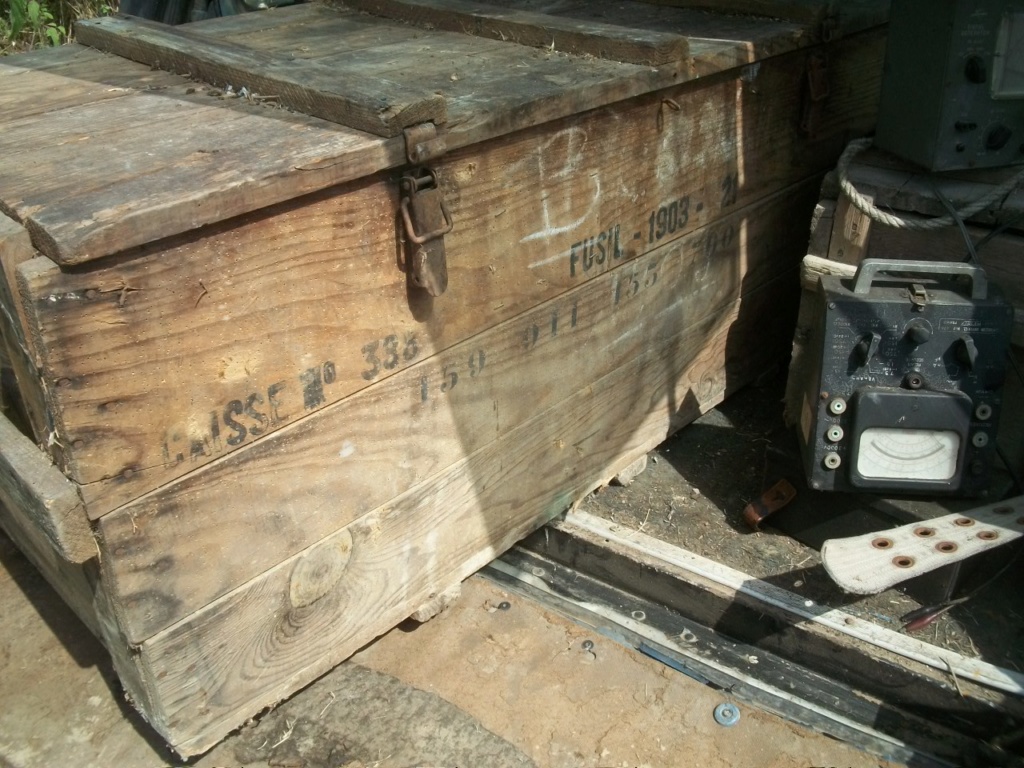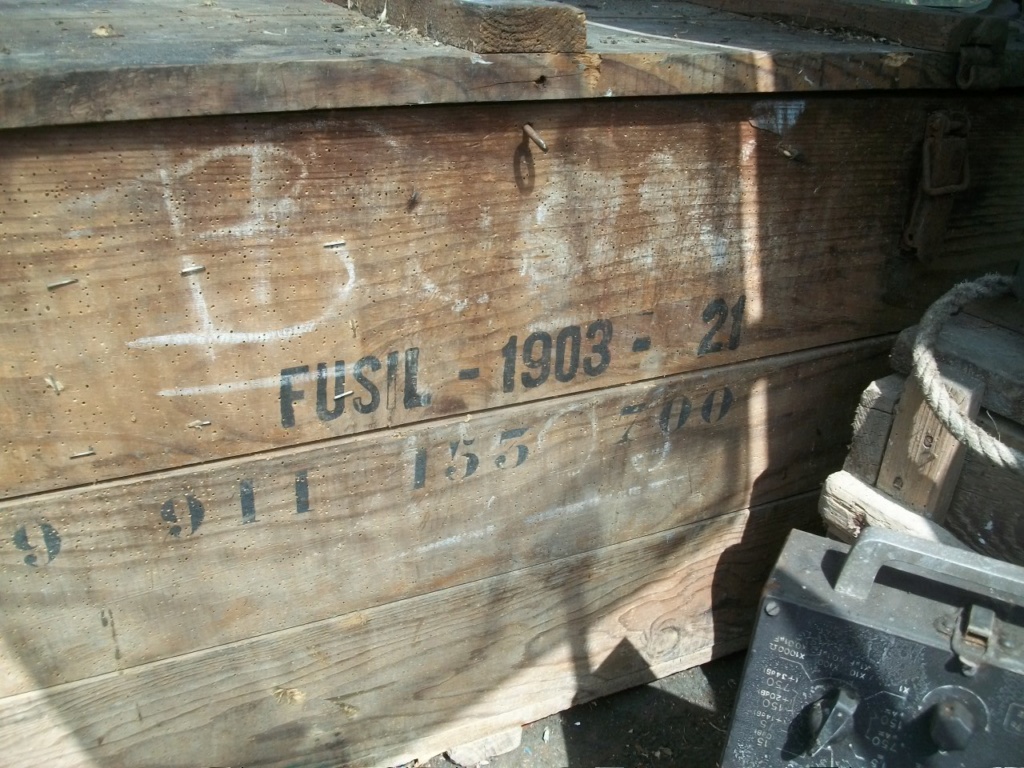Que sont devenus les M1903 Springfield "français" ?
+24
Jeannot du 85
snochkeloch
MIMIBOURGUIGNON
joselito
oneill
spawn73
ithaca
udm42
Shorty33
teufelhund
waltherpara
oxi81
TOMEÏ
feder504
dédé
Verchère
STMIHIEL1918
HELIX
Gilles78 †
Badabom
Bob
EKAERGOS
WICHITA
Joseph de Cacqueray
28 participants
Page 3 sur 4
Page 3 sur 4 •  1, 2, 3, 4
1, 2, 3, 4 
 Du Nouveau -> direction l'Indochine !
Du Nouveau -> direction l'Indochine !
Bonjour à tous,
Je suis tombé sur ce site par hasard:
http://www.chasseurs-de-memoire.com/t32911p25-garde-rouby-marcel-indochine
Le "sous-officier", sur la droite de la première photographie, semble bien avoir un M1903, alors que le reste des Muongs ont des US17.
Rebelote pour le sous-officier (et son voisin à sa droite) sur la deuxième photographie.
Salutations.
Joseph
Je suis tombé sur ce site par hasard:
http://www.chasseurs-de-memoire.com/t32911p25-garde-rouby-marcel-indochine
Le "sous-officier", sur la droite de la première photographie, semble bien avoir un M1903, alors que le reste des Muongs ont des US17.
Rebelote pour le sous-officier (et son voisin à sa droite) sur la deuxième photographie.
Salutations.
Joseph
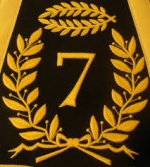
Joseph de Cacqueray- Membre averti

- Nombre de messages : 130
Age : 40
Localisation : Bärenland - la partie plate
Date d'inscription : 15/08/2015
 Re: Que sont devenus les M1903 Springfield "français" ?
Re: Que sont devenus les M1903 Springfield "français" ?
 Oui "çà pourrait le faire"..mais la qualité de la photo et la bretelle qui masque une partie de la crosse ne permet pas vraiment de conclure.
Oui "çà pourrait le faire"..mais la qualité de la photo et la bretelle qui masque une partie de la crosse ne permet pas vraiment de conclure. En revanche je trouve que par rapport aux US17 il me semble que l'extrémité du canon qui dépasse l'embouchoir est plus courte et qu'on ne distingue pas les "oreilles" protégeant le guidon comme sur les US17.
Un peu plus bas dans ce site il y a une photo intitulée "Détente pendant la construction Est du Poste de Hoa-Binh" ou on voit un groupe d'Européens;en slip "Kangourou" particulièrement seyant et ajusté ; dont celui à gauche porte un fusil à la bretelle dont le canon sort assez peu de l'embouchoir ;mais là aussi la qualité de la photo,même agrandie, ne me permet pas de conclure.


EKAERGOS- Pilier du forum

- Nombre de messages : 6173
Age : 65
Date d'inscription : 06/05/2010
 Re: Que sont devenus les M1903 Springfield "français" ?
Re: Que sont devenus les M1903 Springfield "français" ?
TOMEÏ a écrit:Re Michel.
Bien entendu arrivée par la voie des airs. D'une part par LONDRES et d'autre part par ALGER (pour ces derniers en général armes et munitions allemandes de prise mais pas que).
J'ai tardé à répondre car je cherchais dans mes archives, issues du Vercors, le détail des contenairs et de leurs contenus mais impossible, pour l'instant, de remettre la main dessus.
Voici deux exemplaires issus de l'un de ces parachutages :
U.S. 1903 SPRINGFIELD ARMORY N° 141XXXX de 1932, issu de grenier, bois sains, "ferraille" piquée, légèrement restaurée, avec bretelle française.
U.S. 1903 A3 REMINGTON N° 339XXXX de 1942, en bon état avec bretelle règlementaire.
Ces armes ont été, comme le veut la législation en vigueur, neutralisées AN depuis des décennies et ont été cédés.
Bonsoir,
J'ai suivi votre sujet avec une grande attention car je possède un 12-43 03A3 Remington qui a été parachuté à mon père (entre autres mais il était pile dessous) Il a été parachuté fin mai / début juin 44 en provenance du sud de l'Angleterre par un B24. Nous avons rencontré le pilote de ce largage en 1984. Ce M1903A3 n'a jamais tiré car les munitions ont été saisies par les Allemands (c'est une longue histoire) Je viens de le déclarer et de le remettre en état. Il est de la série 4 096 xxx. Je suis bien sur très sensible à tout ce qui se rapporte à son histoire. Je vous met quelques photos si je peux !


Dernière édition par oneill le Dim 2 Oct - 22:01, édité 1 fois
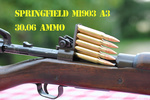
oneill- Membre

- Nombre de messages : 16
Age : 63
Localisation : Bretagne
Date d'inscription : 02/10/2016
 Re: Que sont devenus les M1903 Springfield "français" ?
Re: Que sont devenus les M1903 Springfield "français" ?
Bonjour Oneill
Attention avec un seul message au compteur de ne pas oublier de passer par la case présentation rapidement comme l'exige la charte du forum...
Sinon, pan-pan-cucu par la modération
Attention avec un seul message au compteur de ne pas oublier de passer par la case présentation rapidement comme l'exige la charte du forum...
Sinon, pan-pan-cucu par la modération

François
"Je demande d'emmener avec moi 600 hommes de la Légion étrangère afin de pouvoir, le cas échéant, mourir convenablement"... (Général Gallieni à Madagascar).
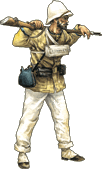
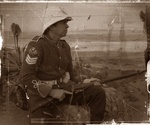
oxi81- Pilier du forum

- Nombre de messages : 10905
Age : 62
Localisation : Entre la mer et le ciel des Corbières
Date d'inscription : 14/11/2010
 Re: Que sont devenus les M1903 Springfield "français" ?
Re: Que sont devenus les M1903 Springfield "français" ?
Ah zut, j'y vais.

oneill- Membre

- Nombre de messages : 16
Age : 63
Localisation : Bretagne
Date d'inscription : 02/10/2016
 Re: Que sont devenus les M1903 Springfield "français" ?
Re: Que sont devenus les M1903 Springfield "français" ?
Très joli 1903a3 et de provenance connu encore mieux !
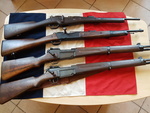
Shorty33- Membre expert

- Nombre de messages : 676
Age : 34
Date d'inscription : 30/10/2015
 Re: Que sont devenus les M1903 Springfield "français" ?
Re: Que sont devenus les M1903 Springfield "français" ?
https://www.tircollection.com/t30938-presentation-oneill#415383
Merci. Je connais toute l'histoire de cette carabine depuis son départ d'un entrepôt Anglais en mai/juin 44 jusqu'à aujourd'hui. J'ai un blanc entre sa fabrication et son largage. J'ai lu des choses intéressantes dans ce post que je vais suivre. Les archives françaises de l'époque ont été détruites dans un incendie.
Merci. Je connais toute l'histoire de cette carabine depuis son départ d'un entrepôt Anglais en mai/juin 44 jusqu'à aujourd'hui. J'ai un blanc entre sa fabrication et son largage. J'ai lu des choses intéressantes dans ce post que je vais suivre. Les archives françaises de l'époque ont été détruites dans un incendie.

oneill- Membre

- Nombre de messages : 16
Age : 63
Localisation : Bretagne
Date d'inscription : 02/10/2016
 Re: Que sont devenus les M1903 Springfield "français" ?
Re: Que sont devenus les M1903 Springfield "français" ?
oneill a écrit:https://www.tircollection.com/t30938-presentation-oneill#415383
Merci. Je connais toute l'histoire de cette carabine depuis son départ d'un entrepôt Anglais en mai/juin 44 jusqu'à aujourd'hui. J'ai un blanc entre sa fabrication et son largage. J'ai lu des choses intéressantes dans ce post que je vais suivre. Les archives françaises de l'époque ont été détruites dans un incendie.
Un beau 1903 avec une belle histoire d' époque. .......trés bon avant avant de s' endormir. ......
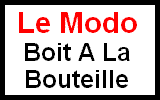
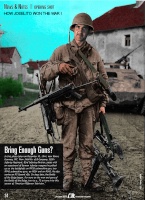
joselito- Modérateur

- Nombre de messages : 17734
Age : 65
Localisation : FTA Bully Chti !
Date d'inscription : 29/05/2011
 Re: Que sont devenus les M1903 Springfield "français" ?
Re: Que sont devenus les M1903 Springfield "français" ?
J'ai depuis peu trouvé un manuel du soldat en campagne pour le 1903 en français. Édité en janvier 43 à l'usage des troupes d'Afrique du nord. Mais le mien, un A3, provient bien du pret bail américain et livré en première moitié 1944. Son parachutage depuis l'Angleterre etait destiné à la résistance du nord bretagne, région de Saint Malo.

oneill- Membre

- Nombre de messages : 16
Age : 63
Localisation : Bretagne
Date d'inscription : 02/10/2016
 Re: Que sont devenus les M1903 Springfield "français" ?
Re: Que sont devenus les M1903 Springfield "français" ?
Bonjour à tous
J'ai retrouvé des photos et donc des traces de 1903 en Algérie, plus précisément à Oran, aux mains de L'OAS en premier lieu et finalement aux mains des gendarmes mobiles en mars 1962. Sauriez-vous d'où pouvaient provenir ces armes qui semblaient être restées dans l' Armée Française largement après 1945 ?
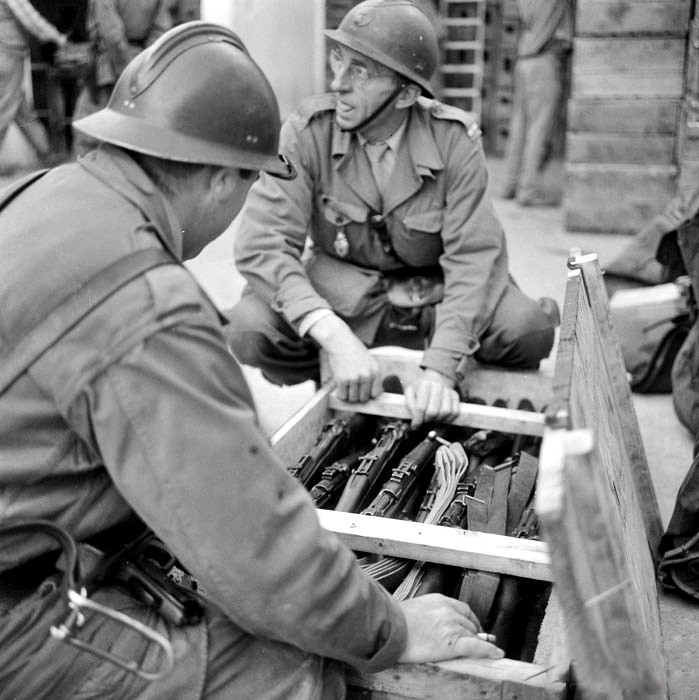
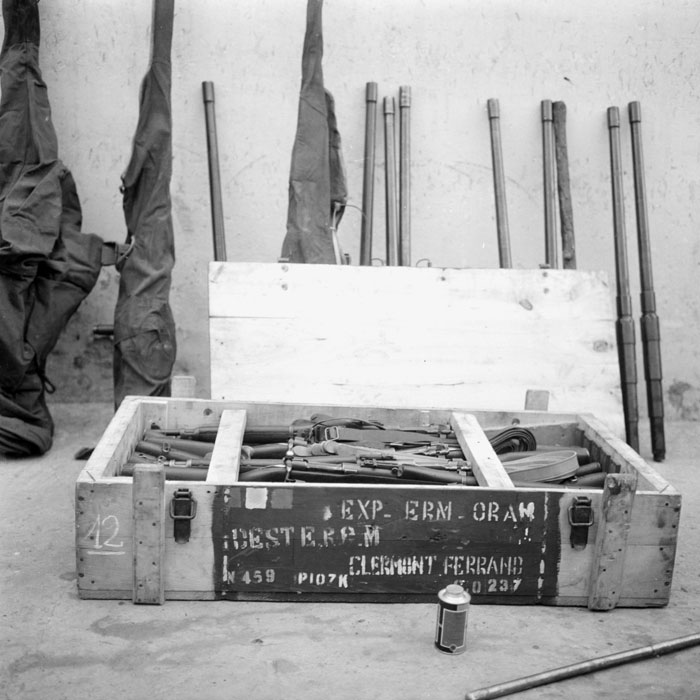
J'ai retrouvé des photos et donc des traces de 1903 en Algérie, plus précisément à Oran, aux mains de L'OAS en premier lieu et finalement aux mains des gendarmes mobiles en mars 1962. Sauriez-vous d'où pouvaient provenir ces armes qui semblaient être restées dans l' Armée Française largement après 1945 ?



oneill- Membre

- Nombre de messages : 16
Age : 63
Localisation : Bretagne
Date d'inscription : 02/10/2016
 Re: Que sont devenus les M1903 Springfield "français" ?
Re: Que sont devenus les M1903 Springfield "français" ?
Bonjour,
La mise en scène des photos fait bien penser à une saisie d'armes...
Ça a l'air d'être des 1903 première guerre à levier de culasse droit?
Avec des bretelles de MAS ?
La mise en scène des photos fait bien penser à une saisie d'armes...
Ça a l'air d'être des 1903 première guerre à levier de culasse droit?
Avec des bretelles de MAS ?

STMIHIEL1918- Pilier du forum

- Nombre de messages : 1368
Age : 56
Date d'inscription : 01/01/2016
 Re: Que sont devenus les M1903 Springfield "français" ?
Re: Que sont devenus les M1903 Springfield "français" ?
STMIHIEL1918 a écrit:
Ça a l'air d'être des 1903 première guerre à levier de culasse droit?
Euh...les M1903 n'ont jamais eu de culasse à levier droit....
François
"Je demande d'emmener avec moi 600 hommes de la Légion étrangère afin de pouvoir, le cas échéant, mourir convenablement"... (Général Gallieni à Madagascar).


oxi81- Pilier du forum

- Nombre de messages : 10905
Age : 62
Localisation : Entre la mer et le ciel des Corbières
Date d'inscription : 14/11/2010
 Re: Que sont devenus les M1903 Springfield "français" ?
Re: Que sont devenus les M1903 Springfield "français" ?
La culasse que l'on voit droite et juste relevée en fait. Les autres sont bien fermées.
Il s'agit bien d'une saisie d'arme de L'OAS. Je penserais à priori qu'il s'agit de 1903 datant des premières fournitures américaines de 1942 après l'Opération Torch. Celle-ci ont du rester sur place en Algérie ou au Maroc et, si j'en crois les inscriptions sur la caisse, les armes allaient de l' ERM d'Oran à destination de l'ERGM de Clermont Ferrand afin, sans doute, d'alimenter les réseaux OAS en métropole. La saisie est intervenue juste avant l'expédition avec tout un tas d'autres armes autos et semi autos.
Mon raisonnement est-il plausible ?
Il s'agit bien d'une saisie d'arme de L'OAS. Je penserais à priori qu'il s'agit de 1903 datant des premières fournitures américaines de 1942 après l'Opération Torch. Celle-ci ont du rester sur place en Algérie ou au Maroc et, si j'en crois les inscriptions sur la caisse, les armes allaient de l' ERM d'Oran à destination de l'ERGM de Clermont Ferrand afin, sans doute, d'alimenter les réseaux OAS en métropole. La saisie est intervenue juste avant l'expédition avec tout un tas d'autres armes autos et semi autos.
Mon raisonnement est-il plausible ?

oneill- Membre

- Nombre de messages : 16
Age : 63
Localisation : Bretagne
Date d'inscription : 02/10/2016
 Re: Que sont devenus les M1903 Springfield "français" ?
Re: Que sont devenus les M1903 Springfield "français" ?
Tout à fait.
Une expédition d'Oran vers Clermont-Ferrand qui n'a jamais eu lieu et la caisse a finie par être retrouvée et saisie par les gendarmes.
Caisse qui date probablement, comme tu l'as dit, de l'opération Torch.
Une expédition d'Oran vers Clermont-Ferrand qui n'a jamais eu lieu et la caisse a finie par être retrouvée et saisie par les gendarmes.
Caisse qui date probablement, comme tu l'as dit, de l'opération Torch.
François
"Je demande d'emmener avec moi 600 hommes de la Légion étrangère afin de pouvoir, le cas échéant, mourir convenablement"... (Général Gallieni à Madagascar).


oxi81- Pilier du forum

- Nombre de messages : 10905
Age : 62
Localisation : Entre la mer et le ciel des Corbières
Date d'inscription : 14/11/2010
 Re: Que sont devenus les M1903 Springfield "français" ?
Re: Que sont devenus les M1903 Springfield "français" ?
oxi81 a écrit:STMIHIEL1918 a écrit:
Ça a l'air d'être des 1903 première guerre à levier de culasse droit?
Euh...les M1903 n'ont jamais eu de culasse à levier droit....
je me suis mal expliqué: les 1903 ont tous le levier de culasse coudé, mais d'abord perpendiculaire à 45° à la culasse jusqu'en 1929 (straight bolt), puis à partir du A1 (1929 je crois) et les suivants A3... ont un levier, toujours coudé, mais dans un angle plus ouvert et fuyant vers l'arrière (swept-back bolt). Une question d'ergonomie sans doute.
Sur la 2e photo on voit bien que le levier est parfaitement perpendiculaire à la culasse. Donc pour moi celui là au moins est un 1903 première guerre. L'embouchoir que l'on voit à gauche me semble bien "blanc", il a perdu son bronzage, donc jamais parkerisé.
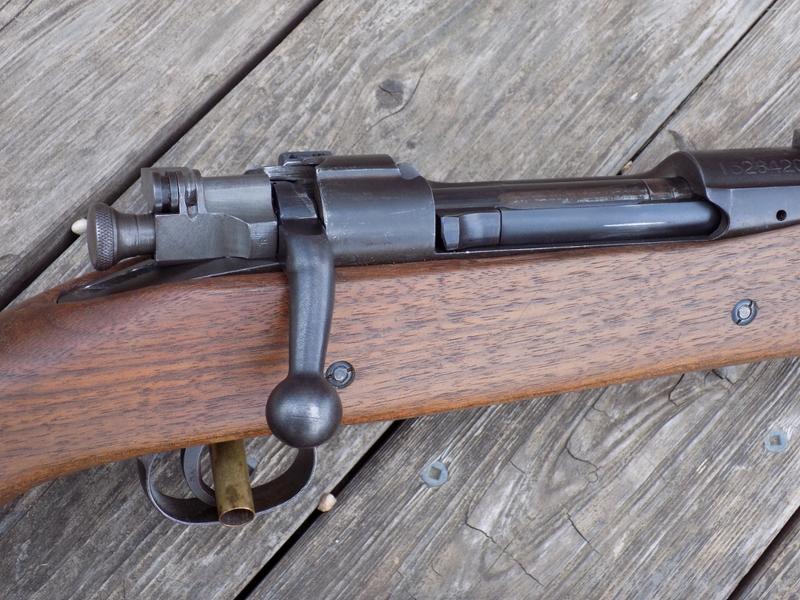
swept-back bolt

straight bolt

STMIHIEL1918- Pilier du forum

- Nombre de messages : 1368
Age : 56
Date d'inscription : 01/01/2016
 Re: Que sont devenus les M1903 Springfield "français" ?
Re: Que sont devenus les M1903 Springfield "français" ?
Ce qui serait conforme avec l'idée d'être en présence de 1903 livré après la fin 42. La plupart étaient de "low numbers" toujours assez bon pour De Gaulle serait-on tenter de dire mais, je pense surtout que les américains se méfiaient de nous depuis la capitulation et n'avaient pas envie de voir ces armes se retourner contre eux par un curieux revers. Quoiqu'il en soit, à la même époque, à Guadalcanal, les troupes US n'étaient pas mieux équipées.
Pour les bretelles, je trouve qu'elles ressemblent à des Web Sling US M1923.
Si quelque chose vous revient, n'hésitez pas.
Merci
Pour les bretelles, je trouve qu'elles ressemblent à des Web Sling US M1923.
Si quelque chose vous revient, n'hésitez pas.
Merci

oneill- Membre

- Nombre de messages : 16
Age : 63
Localisation : Bretagne
Date d'inscription : 02/10/2016
 Re: Que sont devenus les M1903 Springfield "français" ?
Re: Que sont devenus les M1903 Springfield "français" ?
A propos d'abandonsHELIX a écrit:
On estime à presque 350.000 le nombre de fusils abandonnés en France après l'évacuation de Dunkerque .
 ...
...A-t-on une idée - même approximative - du nombre ( ou de quintaux ... ) d'armes et de munitions de tous calibres laissées par la France en Indochine après 1954
 ?
?Merci
 . Mimi
. MimiMimibourguignon

( le VRAI KIR , c'est d'la crème de cassis à 20 degrés ET du Bourgogne Aligoté, ET RIEN D'AUTRE !!! )

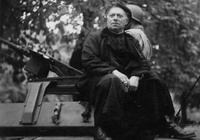
MIMIBOURGUIGNON- Pilier du forum

- Nombre de messages : 1178
Age : 76
Localisation : Dijon 21
Date d'inscription : 12/10/2017
 Re: Que sont devenus les M1903 Springfield "français" ?
Re: Que sont devenus les M1903 Springfield "français" ?
de la 66 2b en allemagne jamais vu de springfields dans mon régiment le 301e GA.
Pour les classes des US17 a culasse soudée qui ferraillaient vu le traitement qu'ils subissaient.
Aux manoeuvres des carabines US .Pour le tir des 49-46-Mat 49-mac50
Pour les classes des US17 a culasse soudée qui ferraillaient vu le traitement qu'ils subissaient.
Aux manoeuvres des carabines US .Pour le tir des 49-46-Mat 49-mac50


snochkeloch- Membre averti

- Nombre de messages : 138
Age : 77
Localisation : a coté grande bleue
Date d'inscription : 08/07/2010
 Re: Que sont devenus les M1903 Springfield "français" ?
Re: Que sont devenus les M1903 Springfield "français" ?
Mon père me racontait qu'en 1975/1976 au camp inter-nations de Steten en Allemagne ses nouvelles recrues s’entraînaient au maniement d'armes avec des US 17 à culasse soudée.

Jeannot du 85- Membre expert

- Nombre de messages : 552
Age : 27
Date d'inscription : 31/05/2018
 Re: Que sont devenus les M1903 Springfield "français" ?
Re: Que sont devenus les M1903 Springfield "français" ?
Un peu de lecture mais dans la langue de Cheakspare
"Rearming thre French" Gov printing office.
The first small arms which the French obtained from Allied sources consisted, it will be recalled, of the 8,000 rifles assigned in November 1942 and delivered to them from the United Kingdom in mid-January 1943.19 These were .30-caliber M1917 (Enfield) rifles. At the time, French units engaged in Tunisia were equipped with small arms of all descriptions and calibers, particularly of French manufacture, such as the 8-mm. level spring loading rifle (Lebel), and the 8-mm. model 1912-16 mousqueton or carbine. One unit, the 1st Free French Division (later renamed the 1st DMI), was using .303-inch rifles of British
manufacture. Meanwhile, training centers and Sovereignty forces charged with the defense of the territory were using, in addition to arms of French manufacture, some 19,000 German rifles of the Mauser and Herstal models, both 7.92-mm., and a number of Italian rifles generally in poor condition, all of which had been collected on battlefields in Tunisia. In May 1943, with more American rifles reaching North African ports, French authorities turned the remaining stocks of French manufacture over to nonprogram units (Moroccan tabors, Commandos, Spahis, and the like).20 In addition to the M1917 rifle, which they received throughout the year 1943, the French were also given large quantities of the M1903 (Springfield), likewise .30 caliber. The continued issue to them of these two weapons was being made at a time when the M1903 rifles in the hands of U.S. troops were gradually being replaced by newer and more efficient arms, the .30-caliber M1 rifle and M1 carbine. The French who were not being issued these weapons feared that their units would be less fit than the U.S. troops fighting along with them. American officials, on the other hand, acted on the principle that the M1 rifles and carbines, being scarce at the time, could be made available only at the expense of U.S. troops. They felt justified, as a result, in prescribing acceptable substitute weapons of standard issue during the current war. As both the M1903 and M1917 fell in that category, the former being still used by U.S. troops and the latter by the British, the two weapons became standard issue for the North African program units. Deliveries were made at a slow and irregular pace because of the over-all short
Two of the five infantry division reconnaissance battalions, as well as the two nondivisional reconnaissance battalions (the 1st and 2d Algerian Spahis Regiments) were equipped with M3A3's exclusively. Ibid. 18 This section draws upon these files: JRC 474/001 Small Arms—Misc, JRC 474/002 .30-cal Rifles, JRC 474/003 Automatic Weapons, and JRC 474/004 Spare Parts for Small Arms. 10 See pp. 27, 28, above.
20 Msg 1926, FLAMBO to 15th Army Gp, 19 Dec 43, JRC 474/001 Small Arms—Misc.
CONTROVERSY OVER SUBSTITUTE WEAPONS 247
age of rifles and in a somewhat erratic fashion as to type depending on availability in the United Kingdom, from where they were shipped to the French. As a result many combat units received both magazinetype rifles. This fact seriously increased spare-part and maintenance difficulties, for although the Enfield and Springfield used the same ammunition their parts were not interchangeable. The French would have preferred to equip all of their combat units with the M1903. This was not possible since the larger part of the rifles issued to them, approximately two thirds, consisted of M1917's. At any rate, they attempted, in the interests of economy and simplicity in the distribution of spare parts and maintenance, to standardize the type of rifle used in each unit. This they were not able to do until January 1944 because they had not been issued grenade launchers for the M1917 rifle and therefore had been forced to retain a number of M1903's in units equipped with the other rifle.21 Further aggravating maintenance problems was the fact that a considerable proportion of the rifles (estimated by the French as 10 percent, especially the M1917's) were found to be of a low order of serviceability. This was not surprising for the weapons involved were old. In fact they were part of the stocks shipped by the United States to the British after the evacuation of Dunkerque in 1940 and had served the Home Guard for over two years before being turned over to the French. The latter were forced to effect repairs made possible only by the receipt, in July 1943, of a substantial allocation of spare parts and maintenance materials.22
By the end of January 1944 program units engaged on the Italian front were equipped with pistols in lieu of carbines, and with M1903 and M1917 magazine rifles in lieu of semiautomatic rifles such as the M1. The Moroccan tabors and other nonprogram units, on the other hand, were firing their French weapons, thus adding to the complexity of the supply problem and in some instances causing undue hardship on personnel. A U.S. adviser told of the losses sustained by a Moroccan goum when, having exhausted the ammunition for their French weapons, the men were unable to borrow any from adjoining units.23 Throughout 1943 American authorities in the theater had recognized the desirability of providing French infantry units with additional arms to compensate for the reduced fire power resulting from the rifle substitutions imposed on them. With this in view they took a number of steps, most important of which consisted in raising the allowance of automatic weapons per infantry regiment.24 In addition, General Devers recommended, in March 1944, that a portion of the M1 carbines then being earmarked for U.S. service troops in the theater be diverted to French combat units. His proposal was approved and the MAB authorized the lend-lease transfer to the French from U.S. theater stocks of 13,000 carbines.25 These were to be issued to seven divisions at the rate of 2,000 per infantry
21 Memo, Leyer for Loomis, 30 Oct 43, JRC 474/002 .30-cal Rifles. 22 Memos, Leyer for Loomis, 16 Jun 44, and Col Villaret for International Div ASF, 31 Mar 44,
JRC 474/002 .30-cal Rifles; Memo, Loomis for Leyer, 28 Oct 43, JRC 474/004 Spare Parts for Small Arms. 23 Memo, Kingman for Loomis, 26 Jan 44, JRC 333/002 Inspections by Gen Kingman. 24 See pp. 250-51, below. 25 Msgs W-4323, Devers to AGWAR, 5 Mar 44, and 1971, Somervell to Devers, 12 Mar 44, JRC 474/002 .30-cal Rifles.
248 REARMING THE FRENCH
division and 1,500 per armored division.26 Priority of issue was to be "above U.S. service troops but below U.S. combat units." 27 It was then that the publication of a pessimistic report on the fire power of the French infantry, drafted at the end of March 1944 by an ASF officer sent on an inspection tour in the theater, aroused considerable speculation both in Washington and in Algiers and forced a re-examination of the French rifle situation. The report implied that, since the French had been denied M1 carbines and semiautomatic rifles and were using magazine rifles in poor condition, the fire power of their infantry was inferior to that of the enemy and to that of the adjoining U.S. infantry. In consequence, the personnel casualty rate was "prohibitively high" and the functions of the U.S. command were "unnecessarily complicated." Subsequent investigation revealed that the serious implications contained in the ASF report were grossly exaggerated. G-3, AFHQ, definitely established, on the basis of information furnished by General Juin himself, that the French advances in Italy had been accomplished without undue losses. It was more likely—and the fact has been confirmed since the war—that whatever difficulties French infantry units were, and would later be, experiencing with regard to rifles were not the result of inferior equipment but rather of diversity of equipment. Standardization could have been achieved only by providing all the units concerned with M1 rifles and carbines.
Since the rate of production of these weapons made this impossible, AFHQ decided not to pursue the matter any further.28 In July 1944, answering a query from the War Department, General Loomis reviewed the French rifle situation as it stood on the eve of ANVIL. He estimated that the French had received a total of approximately 215,000 rifles including 167,000 M1917's, 47,000 M1903's, 740 M1's, and 13,400 M1 carbines. Of the total, 4,000 rifles and carbines had gone to the French Air Force, and all the M1 rifles to the 1st Parachute Regiment (1st RCP). The over-all figure was considered adequate to cover the needs of the expeditionary forces as well as those of replacements and training centers. To ensure adequacy of fire power during the subsequent months, General Loomis obtained from the War Department the additional supply of 8,000 M1 carbines monthly for the last five months of 1944. This measure was considered all the more necessary since the United Kingdom had just requested that the British obligation to furnish an additional 20,000 M1917 rifles be canceled. The carbines, once assigned, were shipped to Coastal Base Section in Marseille for issue as maintenance to French units operating with U.S. forces.29 Subsequent efforts by the French to obtain additional M1 carbines in exchange for M1917 rifles proved unsuccessful.
26 Instead of 6,500 per infantry division and 6,000 per armored division according to the U.S. tables of organization. Memo, Artamonoff for ACofS G-4 AFHQ, 9 Jul 43, JRC 474/003 Automatic Weapons. 27 Msg 64439, Devers to Larkin, 14 Mar 44, JRC 474/002 .30-cal Rifles.
28 Memo, Col Villaret for ACofS G-3 WD, 31 Mar 44, JRC 474/002 .30-cal. Rifles. Another report by the same officer concerning Franco-American relations also was regarded as largely unfounded. See p. 154, above. Memo, Noce for JRC, 22 May 44, JRC 474/002 .30-cal Rifles; Interv with Brig Gen Jean Piatte, former CO 5th Moroccan Tirailleurs Regt, Sep 51. 29 Memo, Loomis for Leyer, 20 Jul 44, Msgs JRC/ 72, Loomis to AGWAR, 7 Aug 44, and W-51930, Somervell to Devers, 17 Jun 44, and Memo, Loomis for CofS Fr Ground Forces, 18 Sep 44, JRC 474/002 .30-cal. Rifles.
CONTROVERSY OVER SUBSTITUTE WEAPONS
"Rearming thre French" Gov printing office.
The first small arms which the French obtained from Allied sources consisted, it will be recalled, of the 8,000 rifles assigned in November 1942 and delivered to them from the United Kingdom in mid-January 1943.19 These were .30-caliber M1917 (Enfield) rifles. At the time, French units engaged in Tunisia were equipped with small arms of all descriptions and calibers, particularly of French manufacture, such as the 8-mm. level spring loading rifle (Lebel), and the 8-mm. model 1912-16 mousqueton or carbine. One unit, the 1st Free French Division (later renamed the 1st DMI), was using .303-inch rifles of British
manufacture. Meanwhile, training centers and Sovereignty forces charged with the defense of the territory were using, in addition to arms of French manufacture, some 19,000 German rifles of the Mauser and Herstal models, both 7.92-mm., and a number of Italian rifles generally in poor condition, all of which had been collected on battlefields in Tunisia. In May 1943, with more American rifles reaching North African ports, French authorities turned the remaining stocks of French manufacture over to nonprogram units (Moroccan tabors, Commandos, Spahis, and the like).20 In addition to the M1917 rifle, which they received throughout the year 1943, the French were also given large quantities of the M1903 (Springfield), likewise .30 caliber. The continued issue to them of these two weapons was being made at a time when the M1903 rifles in the hands of U.S. troops were gradually being replaced by newer and more efficient arms, the .30-caliber M1 rifle and M1 carbine. The French who were not being issued these weapons feared that their units would be less fit than the U.S. troops fighting along with them. American officials, on the other hand, acted on the principle that the M1 rifles and carbines, being scarce at the time, could be made available only at the expense of U.S. troops. They felt justified, as a result, in prescribing acceptable substitute weapons of standard issue during the current war. As both the M1903 and M1917 fell in that category, the former being still used by U.S. troops and the latter by the British, the two weapons became standard issue for the North African program units. Deliveries were made at a slow and irregular pace because of the over-all short
Two of the five infantry division reconnaissance battalions, as well as the two nondivisional reconnaissance battalions (the 1st and 2d Algerian Spahis Regiments) were equipped with M3A3's exclusively. Ibid. 18 This section draws upon these files: JRC 474/001 Small Arms—Misc, JRC 474/002 .30-cal Rifles, JRC 474/003 Automatic Weapons, and JRC 474/004 Spare Parts for Small Arms. 10 See pp. 27, 28, above.
20 Msg 1926, FLAMBO to 15th Army Gp, 19 Dec 43, JRC 474/001 Small Arms—Misc.
CONTROVERSY OVER SUBSTITUTE WEAPONS 247
age of rifles and in a somewhat erratic fashion as to type depending on availability in the United Kingdom, from where they were shipped to the French. As a result many combat units received both magazinetype rifles. This fact seriously increased spare-part and maintenance difficulties, for although the Enfield and Springfield used the same ammunition their parts were not interchangeable. The French would have preferred to equip all of their combat units with the M1903. This was not possible since the larger part of the rifles issued to them, approximately two thirds, consisted of M1917's. At any rate, they attempted, in the interests of economy and simplicity in the distribution of spare parts and maintenance, to standardize the type of rifle used in each unit. This they were not able to do until January 1944 because they had not been issued grenade launchers for the M1917 rifle and therefore had been forced to retain a number of M1903's in units equipped with the other rifle.21 Further aggravating maintenance problems was the fact that a considerable proportion of the rifles (estimated by the French as 10 percent, especially the M1917's) were found to be of a low order of serviceability. This was not surprising for the weapons involved were old. In fact they were part of the stocks shipped by the United States to the British after the evacuation of Dunkerque in 1940 and had served the Home Guard for over two years before being turned over to the French. The latter were forced to effect repairs made possible only by the receipt, in July 1943, of a substantial allocation of spare parts and maintenance materials.22
By the end of January 1944 program units engaged on the Italian front were equipped with pistols in lieu of carbines, and with M1903 and M1917 magazine rifles in lieu of semiautomatic rifles such as the M1. The Moroccan tabors and other nonprogram units, on the other hand, were firing their French weapons, thus adding to the complexity of the supply problem and in some instances causing undue hardship on personnel. A U.S. adviser told of the losses sustained by a Moroccan goum when, having exhausted the ammunition for their French weapons, the men were unable to borrow any from adjoining units.23 Throughout 1943 American authorities in the theater had recognized the desirability of providing French infantry units with additional arms to compensate for the reduced fire power resulting from the rifle substitutions imposed on them. With this in view they took a number of steps, most important of which consisted in raising the allowance of automatic weapons per infantry regiment.24 In addition, General Devers recommended, in March 1944, that a portion of the M1 carbines then being earmarked for U.S. service troops in the theater be diverted to French combat units. His proposal was approved and the MAB authorized the lend-lease transfer to the French from U.S. theater stocks of 13,000 carbines.25 These were to be issued to seven divisions at the rate of 2,000 per infantry
21 Memo, Leyer for Loomis, 30 Oct 43, JRC 474/002 .30-cal Rifles. 22 Memos, Leyer for Loomis, 16 Jun 44, and Col Villaret for International Div ASF, 31 Mar 44,
JRC 474/002 .30-cal Rifles; Memo, Loomis for Leyer, 28 Oct 43, JRC 474/004 Spare Parts for Small Arms. 23 Memo, Kingman for Loomis, 26 Jan 44, JRC 333/002 Inspections by Gen Kingman. 24 See pp. 250-51, below. 25 Msgs W-4323, Devers to AGWAR, 5 Mar 44, and 1971, Somervell to Devers, 12 Mar 44, JRC 474/002 .30-cal Rifles.
248 REARMING THE FRENCH
division and 1,500 per armored division.26 Priority of issue was to be "above U.S. service troops but below U.S. combat units." 27 It was then that the publication of a pessimistic report on the fire power of the French infantry, drafted at the end of March 1944 by an ASF officer sent on an inspection tour in the theater, aroused considerable speculation both in Washington and in Algiers and forced a re-examination of the French rifle situation. The report implied that, since the French had been denied M1 carbines and semiautomatic rifles and were using magazine rifles in poor condition, the fire power of their infantry was inferior to that of the enemy and to that of the adjoining U.S. infantry. In consequence, the personnel casualty rate was "prohibitively high" and the functions of the U.S. command were "unnecessarily complicated." Subsequent investigation revealed that the serious implications contained in the ASF report were grossly exaggerated. G-3, AFHQ, definitely established, on the basis of information furnished by General Juin himself, that the French advances in Italy had been accomplished without undue losses. It was more likely—and the fact has been confirmed since the war—that whatever difficulties French infantry units were, and would later be, experiencing with regard to rifles were not the result of inferior equipment but rather of diversity of equipment. Standardization could have been achieved only by providing all the units concerned with M1 rifles and carbines.
Since the rate of production of these weapons made this impossible, AFHQ decided not to pursue the matter any further.28 In July 1944, answering a query from the War Department, General Loomis reviewed the French rifle situation as it stood on the eve of ANVIL. He estimated that the French had received a total of approximately 215,000 rifles including 167,000 M1917's, 47,000 M1903's, 740 M1's, and 13,400 M1 carbines. Of the total, 4,000 rifles and carbines had gone to the French Air Force, and all the M1 rifles to the 1st Parachute Regiment (1st RCP). The over-all figure was considered adequate to cover the needs of the expeditionary forces as well as those of replacements and training centers. To ensure adequacy of fire power during the subsequent months, General Loomis obtained from the War Department the additional supply of 8,000 M1 carbines monthly for the last five months of 1944. This measure was considered all the more necessary since the United Kingdom had just requested that the British obligation to furnish an additional 20,000 M1917 rifles be canceled. The carbines, once assigned, were shipped to Coastal Base Section in Marseille for issue as maintenance to French units operating with U.S. forces.29 Subsequent efforts by the French to obtain additional M1 carbines in exchange for M1917 rifles proved unsuccessful.
26 Instead of 6,500 per infantry division and 6,000 per armored division according to the U.S. tables of organization. Memo, Artamonoff for ACofS G-4 AFHQ, 9 Jul 43, JRC 474/003 Automatic Weapons. 27 Msg 64439, Devers to Larkin, 14 Mar 44, JRC 474/002 .30-cal Rifles.
28 Memo, Col Villaret for ACofS G-3 WD, 31 Mar 44, JRC 474/002 .30-cal. Rifles. Another report by the same officer concerning Franco-American relations also was regarded as largely unfounded. See p. 154, above. Memo, Noce for JRC, 22 May 44, JRC 474/002 .30-cal Rifles; Interv with Brig Gen Jean Piatte, former CO 5th Moroccan Tirailleurs Regt, Sep 51. 29 Memo, Loomis for Leyer, 20 Jul 44, Msgs JRC/ 72, Loomis to AGWAR, 7 Aug 44, and W-51930, Somervell to Devers, 17 Jun 44, and Memo, Loomis for CofS Fr Ground Forces, 18 Sep 44, JRC 474/002 .30-cal. Rifles.
CONTROVERSY OVER SUBSTITUTE WEAPONS
Dernière édition par teufelhund le Ven 14 Déc - 19:08, édité 1 fois
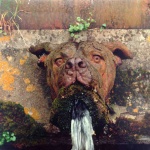
teufelhund- Pilier du forum

- Nombre de messages : 1118
Age : 73
Localisation : D'un côté c'est l'Europe et de l'autre c'est la France ( V Hugo)
Date d'inscription : 07/10/2015
 Re: Que sont devenus les M1903 Springfield "français" ?
Re: Que sont devenus les M1903 Springfield "français" ?
teufelhund a écrit:Un peu de lecture mais dans la langue de Cheakspare
"Rearming thre French" Gov printing office.
T
Dernière édition par teufelhund le Ven 14 Déc - 19:04, édité 1 fois

teufelhund- Pilier du forum

- Nombre de messages : 1118
Age : 73
Localisation : D'un côté c'est l'Europe et de l'autre c'est la France ( V Hugo)
Date d'inscription : 07/10/2015

joselito- Modérateur

- Nombre de messages : 17734
Age : 65
Localisation : FTA Bully Chti !
Date d'inscription : 29/05/2011
 Re: Que sont devenus les M1903 Springfield "français" ?
Re: Que sont devenus les M1903 Springfield "français" ?
Non... c'est une erreur de manip de ma part.joselito a écrit:J'ai 2 fois le texte ....Curieux.....
Au lieu de rééditer j'ai fais "répondre"
Un des deux textes est à supprimer.

teufelhund- Pilier du forum

- Nombre de messages : 1118
Age : 73
Localisation : D'un côté c'est l'Europe et de l'autre c'est la France ( V Hugo)
Date d'inscription : 07/10/2015
50HBM2- Membre confirmé

- Nombre de messages : 213
Age : 55
Date d'inscription : 12/09/2011
 Re: Que sont devenus les M1903 Springfield "français" ?
Re: Que sont devenus les M1903 Springfield "français" ?
Bonjour
ce n est pas un numéro de gestion OTAN mais Français antérieure
Cdl
ce n est pas un numéro de gestion OTAN mais Français antérieure
Cdl
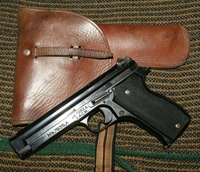
Goumier78- Membre confirmé

- Nombre de messages : 263
Age : 52
Localisation : Canton du Pays d'Olmes
Date d'inscription : 29/11/2011
Page 3 sur 4 •  1, 2, 3, 4
1, 2, 3, 4 
 Sujets similaires
Sujets similaires» Ils sont jeunes, ils sont Français... et ils tirent au 98K à 1000 mètres !
» Que sont devenus les armes américaines après 1945?
» Springfield M1903
» springfield M1903
» Remington US 1903 et Springfield M1903
» Que sont devenus les armes américaines après 1945?
» Springfield M1903
» springfield M1903
» Remington US 1903 et Springfield M1903
Page 3 sur 4
Permission de ce forum:
Vous ne pouvez pas répondre aux sujets dans ce forum
 Accueil
Accueil Connexion
Connexion S'enregistrer
S'enregistrer

